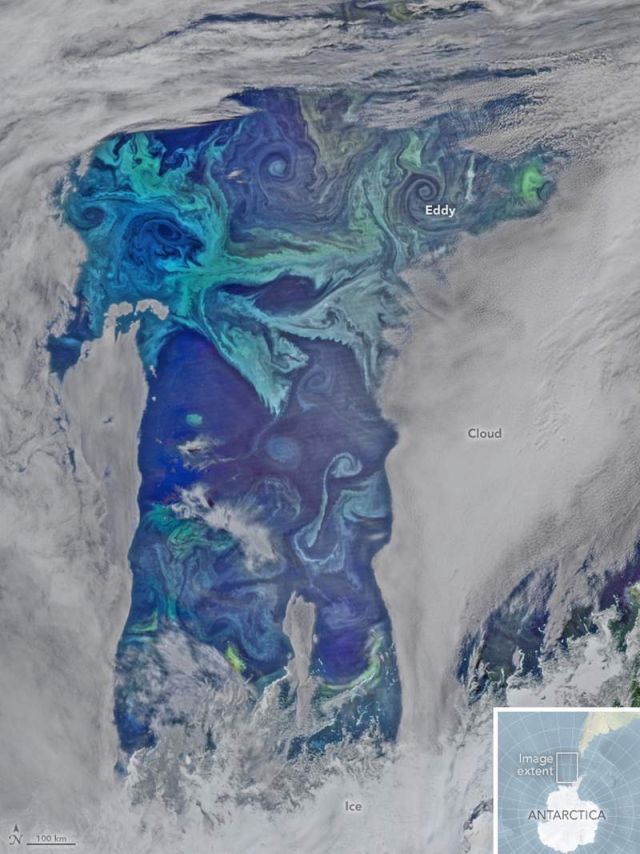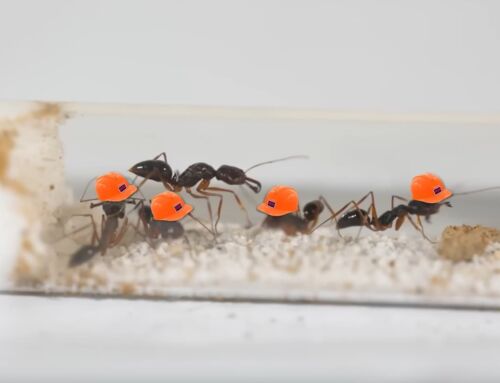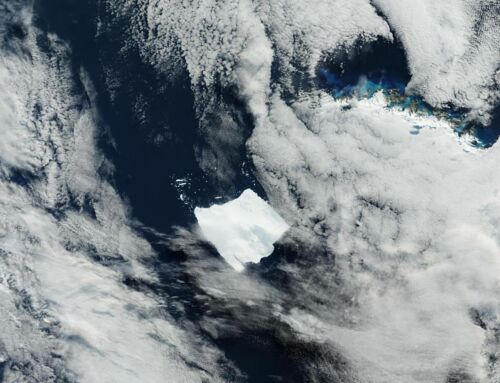Phytoplankton, the grass of the sea, by floating, drifting, plant-like organisms that harness the energy of the Sun. Then they mix it with carbon dioxide that they take from the atmosphere and turn it into carbohydrates and oxygen.
Phytoplankton are critical to the marine food web, being the primary producers of food for the oceanic food web, from zooplankton to fish and shellfish to whales.
Like plants and trees on land, phytoplankton give us a lot more than food. It is estimated that 50 to 80 percent of the oxygen in our atmosphere has been produced by phytoplankton. At the same time, they are responsible for drawing down significant portions of the carbon dioxide from the air. The tiniest of living organisms exert an outsized influence on the planet.
In mid-summer 2016 in the Southern Hemisphere, they took up an outsized parcel of real estate in the Southern Ocean, as shown in the image above. On January 13, 2016, the Visible Infrared Imaging Radiometer Suite (VIIRS) on the Suomi NPP satellite captured this view of extensive phytoplankton blooms stretching from the tip of South America across to the Antarctic Peninsula. The image was built with data from the red, green, and blue wavelength bands on VIIRS, plus chlorophyll data. A series of image-processing steps highlighted the color differences and more subtle features, such as nearly a dozen eddies of varying sizes.
NASA image by Norman Kuring, NASA’s Ocean Color web. Caption by Mike Carlowicz, with assistance from Norman Kuring.
Read more at earthobservatory






Leave A Comment